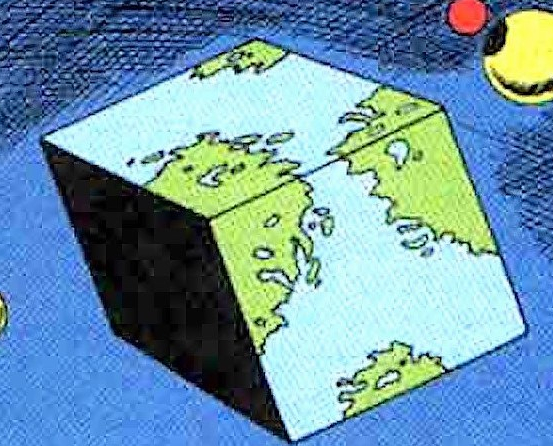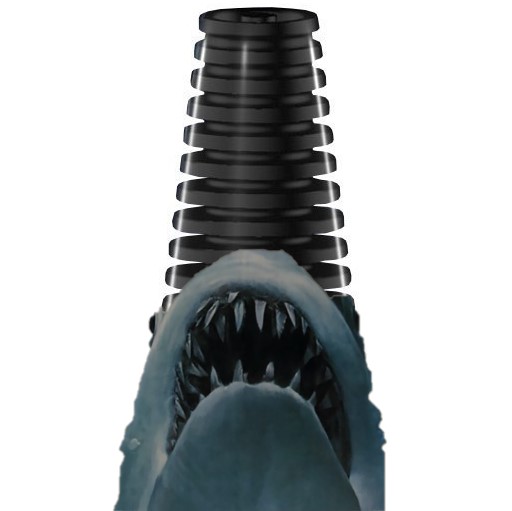- cross-posted to:
- futurology@futurology.today
- cross-posted to:
- futurology@futurology.today
Title reads like at ad, but this is a new way to reach energy independence. I actually have a small EcoFlow device and it’s pretty good for the price.
I hope this tech can be made available in the US soon.
Plug-in systems are built around a microinverter that feeds solar energy back into the home via a standard wall jack.
What the actual fuck?
The PowerStream has three proprietary ports: one that connects to your MC4 solar panels
Disqualified.
First part is classic stuff right?
Yeah. My grandfather (former electrician and electrical inspector) had a specific outlet he’d plug a gas generator in to back feed power into the house. This was in the 80s and 90s.
He also pointed out that he turned the main off so it did not back feed into the grid and power lines that a lineman is expecting to not be live.
From the article:
And when there’s a power outage, the PowerStream will turn off automatically to ensure there’s no electricity in the wires in order to protect line workers from shock. The PowerStream will only turn back on when the grid power returns.
But isn’t a power outage the time you need it?
I think its more that you can supplement you normal power draw so your electricity bill isint so high
Then you can just use the sockets already present on the device.
Transfer switch is the proper tool for this and is a fairly simple install.
Yeah my parents house had an rv/generator hookup and it had a huge bar across both the breakers so power could only flow in one direction. If you hooked up a generator it would cut the house off from the mains.
If you’re gonna do dumb shit, do it smart
Your grandfather’s extra outlet for the alternate feed was the other half of a switch that flipped over when the mains power died. It shuts off the power connection to the house by flipping over and ensures no power goes back over the line, among other things. We have these - albeit the size of a washing machine - in really big datacenters.
Yes as your granddad points out, you can’t just plug a power source into any old outlet at any time. Selling a system like this on Amazon to apartment dwellers seems to encourage just that behavior.
You cannot plug in any old power source, but you can with special micro inverters.
Thanks for the info, very interesting!
I wonder if just plugging a power source in a socket would work in a more modern setting?
Had all electricity redone last year, there was some crazy stuff from the fifties, a hot line going everywhere, just plug into it and ground it, power everywhere 😵💫. Guess I could have plugged some power in anywhere (cutting off the mains).
Now there are differential and fuses for every applience etc.
If you want to power your house independently from the grid, your house has to be independent from the grid.
Anything where you sell your excess power back to the grid is in tight cooperation with the grid operators.Standard house wiring is not set up to accommodate back feeding the grid nor independently powering.
So you will need a changeover switch professionally fitted if you want an independent power source, or your solar panel installers will fit the appropriate equipment to back-feed the grid.
Anything else will likely involve deaths, fires, broken equipment, criminal prosecution, insurance invalidation and all that nasty stuff.insurance invalidation
For clarity, if you do a stupid job at your DIY solar installation and it burns your house down, that is likely a covered cause of loss. There isn’t a policy exclusion for stupidity, unfortunately.
There may be an exclusion for the panels themselves since you could argue that improper workmanship was the proximate cause of loss, but the ensuing damage would likely be covered.
A similar scenario would be an improper plumbing repair flooding your house. Insurance won’t pay to redo the plumbing that was wrong, but it will pay to fix the water damage.
As your own story shows, even in today’s modern times, there is planet of aging wiring still out there and in use.
If you’re asking whether it’s possible to build a home that can work this way, it’s been possible forever and it doesn’t require anything fancy, just a properly rated input outlet (not the same as a regular old bedroom wall plug) and a switch to disconnect from the mains so you aren’t electrifying the grid while workers are repairing it. Whole house generators have been a thing forever. You just have to take some elementary precautions. You don’t just plug some dynamo you bought off Amazon into any old bathroom outlet and say “tada!”
Should not be via a standard wall jack. As far as I know.
Depends on electrical code which depends on, most of all, your standard plugs. In Germany Schuko is deemed non-optimal, but acceptable, for up to 800W.
…no issues regarding exposed prongs, if the inverter doesn’t see AC to sync to it doesn’t output anything. It’s not a dumb spinny magnet generator we’re talking about here.
Most people don’t have an outlet on their balcony, though, and weather-proofing the thing is an issue in any case so while you’re at it you can just as well put in a proper Wieland outlet. 20 bucks or so, the expensive part will be the electrician not the outlet.
In Germany Schuko is deemed non-optimal, but acceptable, for up to 800W.
In the UK our everyday plug is rated for 13A - nearly 3KW. The plug on my phone charger is the same as the one on my tumble dryer and I don’t know if that’s a good thing or a bag thing.
Schuko is rated for 16A continuous for one hour, 3680W, I think the UK plug would actually take quite a bit more you’re just being conservative. Or something odd about ring circuits I don’t want to think about.
In any case practically nothing in a household actually uses 3kW. A stove, yes, but that’s connected to three phases and without a plug (usually 3x20A over here – CEE plugs can do that but they’re chonkers and how often do you move your stove). Newer dryers should stay under 1kW, the standard high load appliances are kettles and hair dryers.
Eh, that’s pretty standard where I live. Didn’t even know there were non standard wall jacks lol
If it has anti islanding at least it’s unlikely to be a shock hazard.
That said are there any other concerns I’m missing?
You don’t want to be sending current up into the grid while workers are repairing it during a power outage. If you just plug some shit into your bedroom outlet, that will happen. You need to disconnect your house from the mains. Whole house generators are old news, but no, your bedroom wall plug isn’t rated to power your whole house, and no, you aren’t just electrifying your own wiring if you try to do so. Whole house generators aren’t hard but they aren’t this easy. And you should be suspicious at how magically simple it sounds to just plug a dynamo into your wall to power everything. It’s the kind of thing we would love to be true because it’s so elegant but there’s a little more to it.
This particular product says it’s 800W max. Most residential wall outlets installed in the last 30 years should be able to handle that (in the US). Also, it’s a product only available in Europe at the moment where they do 220 through the wall, so less than 4 amps which is stupidly low.
Yes, being able to power your whole house through a single outlet is insane. Unless your house draws less than 800W
That’s what anti islanding is.
Prevents power from going into the grid when it’s down.
Way I read it is it puts surplus into the grid to keep you elec bills down.
800 watts isn’t exactly going to set an outlet on fire.
I’m also against proprietary systems but is there an open alternative?
Plug-in systems are built around a microinverter that feeds solar energy back into the home via a standard wall jack.
What the actual fuck?
What’s wrong with that? That’s how basically any balcony solar system works.
The cables in your walls are designed for a certain maximum current before they start to heat up. This current is limited by your breaker.
Now if you introduce a plug in solar setup your current is limited by your maximum breaker capacity + whatever your solar setup can generate.
So if I’d use the specs from the article and apply it to a normal dutch home situation: 16A breaker, + 800W at 230V, which means ~3.5A = 19.5A max. which is probably still fine for short durations.
But now some genius doesn’t read the fine print and hooks up 2 or 3 on the same circuit. There is no electrician that tells him that’s dangerous because it’s all self installed and he doesn’t know any better. And all of a sudden you are up to 26.5A and you got glowing, smoking wires in your walls…
But now some genius doesn’t read the fine print and hooks up 2 or 3 on the same circuit. There is no electrician that tells him that’s dangerous because it’s all self installed and he doesn’t know any better. And all of a sudden you are up to 26.5A and you got glowing, smoking wires in your walls…
Ok sure, that makes sense. This might actually be an issue.
Also, emergency service hazard. The PV won’t turn off if firefighters take out the mains, which makes a house potentially inaccessible during an emergency.
Surprisingly, no. Most inverters in the EU must come with island protection. Meaning that if there is no AC from the grid it immediatly switches off the inverter or the battery, there is no stand alone operation.
There are some systems that allow it but they are rare here and require the mains side to be fed trough the inverter itsself ensuring it’s never back feeding into the grid when there is no power with the same island protection, or less commonly there is a transfer switch of some kind also eliminating the issue. And either should obviously have a main kill switch on the breaker board for emergencies that also switches off the in home power with 1 action.
But most importantly, either of those options is not plug and play and will require an electrician that hopefully does know what he’s doing.
Does the island protection with if you have two inverters running independently? (legally or not)
Yep, I’m not exactly sure on the technical details but it works with multiple inverters. Otherwise having a street full with solar panels on every roof would still be a hazard if the power went out at a distribution junction for said street and repairs would have to be made.
If there is no powerplant feeding some energy, all inverters should shut off. Fixed installs and plug and play variants alike. I’m actually amazed that there are parts in the world where this isn’t common.
Yes, because the frequency of the grid is also a trigger for shutting off the inverter. Inverters generate a frequency which indicates a “non healthy grid” that trigger the shutoff of connected inverters.
I looked into these before and believe the inverters shut off if the mains shuts off. The DC side of the circuit would still be potentially dangerous though.
The inverters need there to be power in the mains circuit because they convert DC to AC and match the phase of the AC power they are generating to the mains supply.
Your breaker will pop. Just like if you were to run a hair dryer on each outlet.
The breaker only sees the current flowing through the breaker though. Not the additional current provided by the solar panels since those don’t flow through the breaker. So it will pop later then that the cables are rated for, therefore introducing an overheat and fire hazard.
Maybe for a same-circuit device that’s consuming more than the breaker can provide? I don’t know enough about this tech but would expect this can be accounted for in some way.
There are ways to somewhat fix it for circuits with a single use.
Fixing the same example: A 16A breaker for the solar feed in, a single 16A breaker for all the consuming appliances on that circuit. And another 16A breaker on the feed in for that circuit is an example that is sometimes used in the Netherlands to add a feed in to an existing circuit with a single outlet connected to it. Meant for washingmachines for instance.
This ensures that the circuit on all circumstances has a maximum current of 16A flowing over any wire by also measuring the outgoing current of both feed in circuits. But if you have multiple outlets you’d still need to stiol measure at a single place or use low enough breakers per outlet that the total stays below the 16A. Which the UK might have if I recall correctly.
Then again this is not a normal setup and requires change in the electric circuit of the home. Which most consumers won’t even realize. Like I said, if everyone keeps to the fine print this thing probably has and limits the extra plug-in solar panels to 1 per circuit, it’s unlikely to actually cause issues because of overdimensioning of the wires. And the safety margin built in which is likely how they have gotten approval. But ignoring or not reading that text and plugging multiple in on the same circuit can and will cause a fire hazard with heavy consumers on the same circuit.
That happens quite a bit in a lot of areas. It sounds stupid but your toaster does not care where the electricity it is using comes from.
As long as the sine waves are in sync with each other then you have nothing to worry about.
It’s probably not standard in America because the technology is newer and the regulations haven’t caught up.
2 problems….
-
If you forget to turn off the mains, it could really make a lineman unhappy.
-
Most of these setups require a reprimand dangerous “ suicide cord”
The first problem is solved by line sensing technology. If there is not power coming in and off of the switch then the inverter will not pump energy back into the system, at least on the ones that are not $12 cheap Chinese junk off of taobao.
And rather than suicide cords they generally have an IEC connector (standard rhombusy shaped computer power connector) on one end and a normal prong on the other.
But you are right that it is dangerous and not recommended to anyone, especially the people that are not smart enough to take the appropriate concerns and considerations into mind before using it.
I’d be super disappointed by owning a solar cell and not being able to use it during a power outage.
That’s a pretty standard issue with grid tied solar systems. You save a lot of money by not having batteries, but when the neighborhood goes down you go down with it.
Plus you don’t want to be pumping electricity into a downed power system, you could actually end up hurting a line man who is working on the system.
However, and both of these issues can be resolved by adding in a generator and a whole house cut off system.
In a power outage scenario, all you would have to do is throw the crossover switch and crank the generator. The generator would produce enough energy to reactivate the solar system.
Yea with solar and a transfer switch you only need a small battery powered inverter to kick on the solar juice
No need to run a generator when the sun is out
I know enphase micro inverters have “anti-islamding” tech that disables output when they lose grid connection. I would expect any reputable manufacturer to also have the same tech.
I don’t expect that for backup generators, but the proper way for them is via a transfer switch. You can wire in a properly made cable instead of a suicide cable. The transfer switch would prevent the inlet connector to the house from ever being live. (And since it is a proper cord from the generator, there would be no exposed ends coming from it.)
I agree on all points, but honestly I’d be pretty upset if I got a solar setup that didn’t work when the power was out haha
There is still a solution for that, solar + battery. I would love to have one myself, but solar alone can be a bit expensive on its own.
Sure, but this solution isn’t that.
Yes it is if you read the article, that’s exactly how he had it set up, and then you just have to manually move the battery where power is needed. You just can’t use your wall outlets when there’s an outage.
A battery is ~$8300 - 10k. It’s amazing how many places will try to charge $16k.
48v 100ah battery with Bluetooth BMS built in is around 700$ on ali express… Slightly more direct from Amazon in the USA if you want it fast. Will store close to 5kwh which I guarantee you beats out this solution. Of course you’d still need to buy the grid sync inverter (available in many places) as well as a solar mppt charger and solar cells. Still will come below this cost - or you’ll simply blow by the capacity of what you would have paid for this solution. But gotta have the old noggin on straight to do it yourself.
A LOT are like that though. They just get you a smaller bill by sending power bank to the grid, rather than making you grid-independent.
Yeah this is not an emergency backup at all. It’s an attempt to add some local storage to the grid and lower your bill. Everything about it is wrong for a power outage. I’m SURE they make this clear on the box!! ;D
You’re also likely to repeatedly trip whatever breaker that outlet is connected to unless it’s a big one like you’d have for a central AC unit, but then you’d likely also know enough to have a proper transfer switch.
This is only supplying like 3.5 amps, so not going to trip any breakers.
Yes, but not at 800W
-
Whole house generators have been around for a long time and they are usually wired, at the junction, into a few specific lines to essential appliances like refrigerators because it’s hard to produce as much current as the grid on your own, and you want to spend what you can generate on site wisely. Trying to power your whole house through some bedroom outlet is not going to work well. Your TV will sit there sucking some of that power listening for your remote to turn it on while your lights will flicker and your fridge will chug chug chug and not stay cold.
Disqualified.
Why?
Because proprietary.

You realise it’s new tech and probably needs a proprietary connection?
Did you disqualify ebikes too when they appeared?
LOL, no, pretty much nothing ever “needs” a proprietary connection these days. Certainly not a fucking plain old power connection for a solar panel!
It’s not just for the panel though, it’s for switching between feeding an outlet and supplying an appliance, looks pretty intelligent to me
But I live in the EU, if they make it proprietary for no reason, they’ll get told to fuck off rather quickly 😂
There are a TON of standardized power connectors available that enable compatibility with off-the-shelf parts. Seriously, just look on Mouser or DigiKey. The only reason for proprietary connectors in this case is to try to obtain vendor lock-in.
Yeah, non-USA for this atm, as much fun as it would be to plug such a system into an apartment.
I believe that the US requires that a direct-feed system has to plug into a physical kill switch setup to prevent back-feed of power during an outage.
Still pretty neat, though!
Same for the EU.
Solar inverters also need to follow the grid frequency
They don’t follow the grid frequency because the EU or US regulations require it, they follow the grid frequency because physics demands it.
In this house we obey Ohm’s law!
Not necessarily. While running parallel to the grid or needs to sync to it of course, but when running in island mode it can do whatever it feels like - if it supports that. My Fronius runs at 52Hz e.g. to keep other generators in the island from starting up.
Interesting - which other generators for example wouldn’t you want starting up?
An engineer dabbling in such things explained to me, that it is hard enough to regulate a small island network frequency and voltage-wise from a single point. Reacting to whatever another source (something like another solar inverter out in the garden with a few panels of its own, e.g.) in the same island grid does could easily lead to potentially destructive oscillations in the regulation circuit. Large grids have “mass” - literally, because large generators and electric motors are spinning at whatever speed they are spinning in whatever phase they are in. So small disturbances from regulating too quickly or a little wrong just disappear into that. The same doesn’t go for a small island grid, so at Fronius they have decided to put 52Hz on the grid which by standard prevents other sources from syncing. Electric utilities do the same when they have to power small villages from diesel generators temporarily - 52Hz and the house mounted solar generators don’t sync.
I think I get that, thanks. So an Island grid is less stable and could cause itself damage if two microinverters say are trying to sync up to each other vs a beefy, stable main grid?
So how does a backup battery system work when islanded? Typically also at 52Hz?
Or can it go into a 60Hz beefy mode?
It would be nice to get all the little island solar inverters working when the grid goes down!
I’m guessing the commenter above is in the EU and operating at 50Hz normally, so running at 60Hz wouldn’t be a great idea. A backup battery and such operate in the same way when islanding.
Yep. And in my case, the backup battery is connected to another DC input on the inverter and the inverter pretty much manages everything. As I understand the documentation, there is no other way to use solar AND a battery at the same time as a power source for islanding. Switching over manually with a short disruption in-between is always possible of course, as is charging an AC coupled battery from an islanding solar inverter.
@Pretzilla@lemmy.world
Also in the US regular 120v outlets are fed from 1 of 2 transformer legs. If you back fed power through a 120v outlet, roughly half of the circuits in your home would function and the others would be dead.
And disclaimer: no one should do this, but when the transfer switch disconnects from the grid, would it work to jump say a breaker across the L1-L2 hots to share that 120v backfeed over both?
Clearly the 240v appliances won’t work in this configuration, but the fridge on one leg and the internet on the other will still work ok, right?
Again, no one try this - it’s just a thought exercise.
Yes, it will actually work. I know it’s very much not to code, but when we lost power for over 10 days, I did this to keep our furnace running and us from freezing to death since it was -10F out.
I only have a small 120V generator, but hooked both legs to hot and backfed via our EV charger’s outlet, since its a 50A circuit. Like you said, nothing 240V worked, but that little 3kW generator did a great job powering basically the whole house with no issues.
That winter was definitely a big driver for me to get a backup battery system so our solar could power the house.
deleted by creator
No.
According to the article this system also detects power outages and shuts off when they happen. Just like full-scale solar power systems. But yeah, no physical kill switch.
These systems automatically turn themselves off during an outage.
That’s great, but it doesn’t matter unless it has the physical cutoff that’s required to bring that kind of system up to the current electrical code for such a system.
they have relays (well, most of them. looking at you, Deye), so it should be fine
Physical shutoff via relays is required by the standard. We’ve just been through a scandal where a manufacturer skimped out on putting them in and had to recall the devices.
I hate technologies that limit cannot use with another manufacturer’s battery". Smells monopoly.
I would, but i’m not allowed by the HOA the hang shit on my balcony.
Fuck’n HOA assholes.
My balcony is also on the right side of the building too, it would be perfect.
Vote.
I ran my small HOA for 1 term and people came at me, bitched about stuff and I got them to come to a meeting where the other homeowners could express their concerns about the proposal and we’d come to an agreement and write up a change. It was no big deal. We even negotiated group rates for shared services and made it so that the costs of the HOA were offset by the savings from the services.
On the other side of the coin, when I left my position to give somebody else a turn at the process I largely automated, they ran it into the ground and bankrupted it while chasing a personal grievance against the city.
Somehow, the HOA attracts power hungry nobodies but they can be voted out if you’re willing to work at it. Also, talk to your neighbors. My guess is that there are others who would back your proposal.
I can’t really find any info regarding renters when it comes to these hoa things or being allowed to partake in a meeting, but i would assume they could care less about a renters opinion unless it benefits them.
I can’t afford to be a homeowner.
I’m sorry to hear that. I remember renting and the feeling of having no control over the whims of the landlord.
HOAholes
Worst Santa.
Aren’t you supposed to be the land of the free?
That’s just what our fascist oppressors tell us.
Wow that’s interesting. I hate how much power my pool eats up in the summer, I’ve been looking for something economical to help run it off of clean energy since the pump runs during peak solar hours anyway.
You can do that today with their setup I think. You would need to plug the pump into one of their batteries and run their solar panel to the battery. You’d also put the battery on grid power.
The article is focused on an inverter that pushes energy back to the grid, something we don’t have yet at this market level.
If you just need the energy for the pool, a small setup without battery is all you need. Saves you half the price. Panels and inverters are around 900€ in Germany. Putting a battery on it makes another 1,200€ and it makes sense only, if you need power in the evening.
Yeah I’m trying to figure out what makes sense for me. I suppose a system with a battery in my home would be nice.
Thermal solar may be better if you only want to heat the pool.
I’m looking to run my pump. A little surplus to offset my AC would be nice too. I see there are special pool pumps made specifically for solar installs but my existing pump is only a couple of years old.
Energy saving tip: you can turn off pool water heating in the summer.
I don’t have a heater for it besides the sun. Figure it’d be nice to run the filter pump on the same thing
Just get solar then. Seems like the solution you are looking for, no?
Yeah, but between federal and state credits, different types of systems, etc. I’ve had a hard time determining what makes the most sense for me. Doesn’t help that trying to do online research quickly funnels you into sales bs.
This is the best summary I could come up with:
These DIY systems from EcoFlow, Anker, and others became very popular around Europe over the last few years as energy costs soared amid steadily decreasing solar and battery prices.
I also have six EcoFlow smart plugs attached to things like the washing machine, coffee maker, and home theater projector that tell the PowerStream to send more or less power.
But importantly, I learned a lot about my family’s energy consumption habits and how much power 800W of haphazardly installed solar panels can produce under a weak northern sun.
Importantly, I have gained a degree of energy independence in this uncertain world — and making regular use of an expensive solar generator that was otherwise just waiting for the next road trip or natural disaster.
The hardest part in setting up the PowerStream is doing the math to ensure your solar panels are wired up properly in series or parallel, especially when maxing out the system like I did.
So I should just feed enough solar power into the home to cover my base load during the day and send any excess to the EcoFlow battery for use when the sun goes down.
The original article contains 2,051 words, the summary contains 192 words. Saved 91%. I’m a bot and I’m open source!
Most European residential electric systems operate at 240v, versus 120v in the US, which means you can only backfeed a US outlet with half the power you could in a European outlet. That alone makes this system half as useful for US applications.
If one of these were made for the US market it would obviously be configured to work at the US mains voltage and frequency. (Europe is 50hz, US is 60).
Your home’s power input is also 240 volts in the US, regardless of being split into two 120 volt rails at the breaker box. It would be trivial to hook up a 240 volt system if you really wanted to, albeit not through one of your regular 5-15/5-20 outlets. You’d have to do it via a dryer outlet or something.
Watts are watts. If the unit is capable of feeding 800 watts into your home’s electrical system, the voltage is irrelevant provided it can supply sufficient amps. A normal US household circuit is 15 amps, so a hypothetical US version of this thing would have to supply ~6-2/3 amps at 120v rather than ~3-1/3 amps at 240v. No big deal. It’s not even close to maxing out a single residential circuit on either continent.
Just to expand, here’s a list of typical 240V appliances in a typical American home:
- Furnace/Heat Pump
- Air Conditioning
- Electric Range/Stove
- Electric clothes Dryer
And some homes have:
- Hot Tub/Spa
Don’t conflate 120V/15A standard outlets with not having 240V at all. All homes have 240V or high power appliances wouldn’t function.
I have a couple in my garage because the previous owner liked carpentry, and I’ll use it when I get an EV.
That’s not that uncommon.
Just want to post a pic of a 20a 220v US outlet for those who don’t know about it.
It fits in a standard box, so you don’t have to use a dryer plug if someone wanted to feed power back in through a outlet. (Of course with a device designed to feed in safely.)

The USA officially hasn’t used 110v/220v since the 1950s. Its 120v/240v and 230v in Europe.
Your home’s power input is also 240 volts in the US
It’s not actually 230V in Europe, it’s 400V. Between each pair of the three phases, that is, between phase and neutral there’s 230V. (If there’s a neutral and you don’t create it locally, different topic).
…but I’d actually have different doubts about using the whole thing in the US: Your plugs. Schukos aren’t meant for the purpose and only code for up to 800W when used to backfeed. That’s almost 1/5th of their 1 hour continuous rating. With those flimsy tinfoil plugs you have you’re going to need special outlets, or hard-wire them.
Amazing how confidently incorrect you are. =)
Why is there always at least one European in these threads misunderstanding how North American power works?
Except he’s probably American or Canadian. Look at his profile.
it’s astonishing how many people in !technology@lemmy.world don’t know anything about this technology
Reading this I kept thinking “How have I not heard of this?” and then I discovered it’s because this sort of setup isn’t possible in the US.












